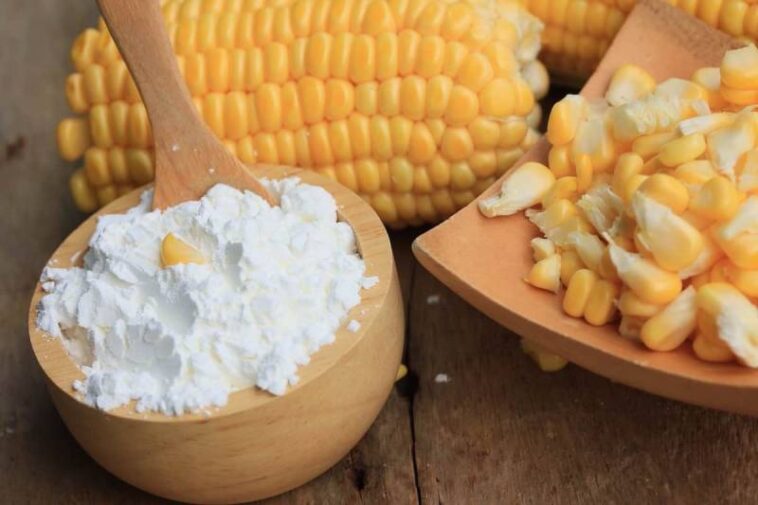
Whether you are buying cornstarch or have it on hand, you may want to know if it is going to go bad. There are a few things you can do to make sure that it stays fresh for as long as possible. Firstly, store your cornstarch in a cool and dry place such as your pantry or freezer.
Store in the freezer
Keeping Cornstarch in the freezer does not mean that the quality of the product is going to be destroyed. However, it is a good idea to know the proper storage of the product. This is because storing Cornstarch improperly can lead to contamination and spoilage.
Proper storage of the product can make it last longer, and reduce waste. This can also help you eat healthier food.
Cornstarch is a powder that is used to thicken liquids. It is usually used in soups and sauces. When stored properly, Cornstarch will last for many years.
The first sign that Cornstarch is spoiling is the presence of bugs. Typically, bugs will be a dark brown or black color. It may also have a smell.
The best way to store Cornstarch is to store it in a sealed container. This will keep bugs and moisture out. Putting it in a freezer will also help freeze the water content in the product, which can help prolong its shelf life.
When Cornstarch is stored improperly, it can develop mold and bacteria. If Cornstarch is exposed to moisture, it will start to mold and become moldy in a couple of days. Mold is harmful to humans, and can even cause death. If you notice mold on the inside of your container, you should throw it away.
In addition, Cornstarch should be stored in a cool, dark place. If it is exposed to direct sunlight, it can be damaged. If you want to keep Cornstarch in a freezer, it is best to keep it in a sealed container.
Cornstarch may also have a sell by date. This is a date printed on the package. This is not a safety date, but a quality indicator from the manufacturer. Cornstarch that is stored properly will last for years without a loss in quality.
Cornstarch is not the first item you purchase when shopping. It is used to thicken soups and sauces, and is often sold in plastic containers. A resealable container is ideal for long-term storage. Cornstarch is also sold in airtight containers.
Refrigerate
Keeping your cornstarch in a cool, dark, and dry place is essential for keeping it fresh. If it is kept in an area where it is exposed to moisture or sunlight, it can go bad and become moldy. You should always check for signs of spoilage before using cornstarch.
If you see signs of mold, you should throw it out. Moldy starch may have toxins and may cause an allergic reaction. Cornstarch is also susceptible to insects. If you have ants in your pantry, you should remove the cornstarch.
If you are unsure of when cornstarch should be thrown out, you should check the label. Most cornstarch is packaged in plastic containers. When you are ready to use cornstarch, remove it from the plastic container and put it in an airtight container. This can keep moisture from entering the cornstarch and also protect the jar’s mouth.
If you are unsure of whether the cornstarch is still good, you should do a simple taste test. You should check for color, clumps, and odor. If the cornstarch looks good and isn’t clumpy, it is still okay to use. However, if the cornstarch is clumpy, mushy, or has a foul taste, it is time to throw it out.
You should also take special care not to open your cornstarch while it is in the jar. If it is open, you may find bugs or ants. These insects are usually black or brown in color. They are often a sign that cornstarch has gone bad.
If you are not sure if your cornstarch is still good, you should take it out of the jar and test it. You can use a quarter teaspoon of the cornstarch to see if it has a good taste. If the cornstarch is clumpy, moldy, or has a bad taste, it is time to throw it out.
In general, cornstarch can last for several years. You can keep it in a refrigerator or freezer. However, freezing cornstarch may increase the risk of moisture exposure and mold growth. It is best to freeze cornstarch in a freezer bag.
Check if there are bugs or insects on your cornstarch
Whether you’re using cornstarch in cooking or a health product, you should always check if there are bugs or insects on your cornstarch before it goes bad. Bad corn starch can cause stomach upsets and other health problems, so you don’t want to waste it.
There are a few signs you can look for to determine if there are bugs or insects on your powder before it goes bad. For example, if you notice that the cornstarch powder is discolored, that’s a sign that there’s something wrong. But, if you don’t see any of these things, that means that the powder is still good.
Another thing to look for is the smell. If the powder has a smell, you should throw it out. If you don’t smell it, then you may have some mold on it. You should also be careful to avoid eating or cooking with moldy cornstarch. That’s because mold can cause serious health problems.
Another sign that cornstarch is bad is if you notice black dots on the powder. These are the bugs’ eggs, and they can still be present in cornstarch that’s still good.
The best way to prevent bugs from invading your cornstarch is to store it in an airtight container. You can do this by placing the powder in an airtight plastic bag. If you’re storing it in a jar, then you can protect the mouth of the jar with a piece of plastic wrap.
You can also check if there are bugs or insects on cornstarch by swishing it around in warm water. This should provide you with a good idea of how good your cornstarch is. You can then repackage the jar or plastic bag in a resealable pouch.
Cornstarch is a fine powder made from the starch in corn kernels. It is used to thicken soups and sauces, and can also be used to create bioplastics. It is sometimes sold in a plastic tub or bag, but you can also store it in your kitchen pantry or even in a root cellar.
Tell if there is mold on your cornstarch
Whether you have just purchased cornstarch or you are storing it for months, there are certain signs to look for that tell if there is mold on your cornstarch. These signs can help you avoid the health risks that come with consuming spoiled food.
The first sign that you should look for is the presence of bugs in the cornstarch. These insects can cause the cornstarch to go bad. The bugs are typically black or brown in color. They can also contain eggs and small larvae. If you notice these bugs, you should discard the cornstarch immediately.
Another sign that your cornstarch is going bad is if it has a strong odor. If your cornstarch has a strong odor, it means that moisture has been able to get into the cornstarch.
Cornstarch is a natural product that is made from corn. When it is stored properly, cornstarch can last for years. It can be stored in a pantry or cupboard. It can also be frozen. Freezing helps preserve the water content of cornstarch for long-term storage.
If you store your cornstarch in a pantry or cupboard, it is important to ensure that the temperature is cool. Leaving your cornstarch in a warm or humid place can lead to mold growth. Mold can cause respiratory issues, digestive disorders, and other health problems. If you are storing your cornstarch in a moist place, you should always use it within 24 hours.
The best way to store cornstarch is to use an airtight container. If you don’t have an airtight container, you should use a plastic wrap to protect the mouth of the jar. If your cornstarch is stored in a cupboard, you should keep it in a dark place. This can help prevent insects from causing the cornstarch to go bad.
When you buy cornstarch, it typically has a sell by date. This is the date on which the product was manufactured. If you have bought cornstarch with a sell by date, you should use it within that time frame. It is important to use your cornstarch before the date on the label expires to ensure its effectiveness.



